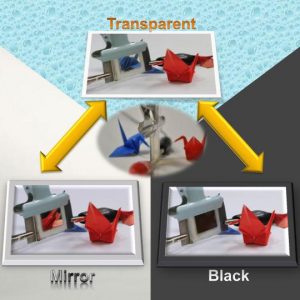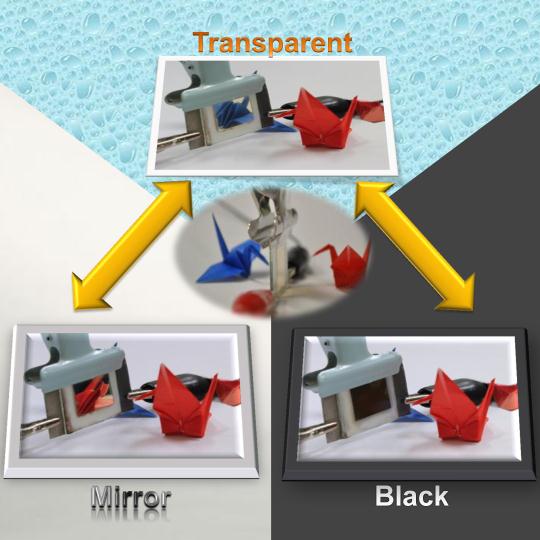 Smart windows enable the modulation of light transmittance. When activated, the device changes from transparent to translucent, partially or fully blocking light and photon energy. One way to realize such a material is the reversible electrodeposition of a metal onto a transparent conducting substrate.
Smart windows enable the modulation of light transmittance. When activated, the device changes from transparent to translucent, partially or fully blocking light and photon energy. One way to realize such a material is the reversible electrodeposition of a metal onto a transparent conducting substrate.
N. Kobayashi and co-workers (Chiba University) have developed a novel metal deposition-based electrochromic device that can realize three optical states in a single material—transparent, mirror and black. Its underlying mechanism is based on the electrodeposition of silver particles on two facing transparent electrodes, one flat and one rough indium tin oxide (ITO) electrode, that sandwich the gel electrolyte inside the electrochromic material. The cell’s default state is transparent, however, applying a voltage to one or other of the electrodes causes the electrodeposition of silver on its surface. When silver is deposited on the flat electrode a variable reflective surface is created. In the case of the rough electrode, on the other hand, the cell turns black and functions as a light absorbing device. Both of these changes are reversed when the voltage is no longer applied. The multi-functionality of this novel cell and its high switching stability will make it suitable for applications in light modulating devices, such as smart windows and information displays.
The research is reported in the second issue of Advanced Optical Materials, the new section in Advanced Materials (2010 IF: 10.880) dedicated to breakthrough discoveries and fundamental research in the field of light-matter interactions.

















